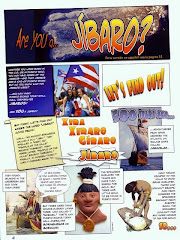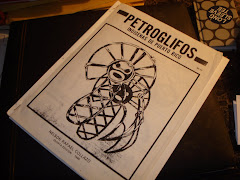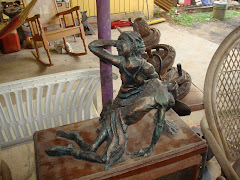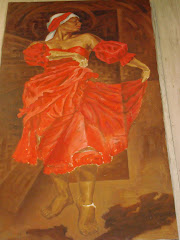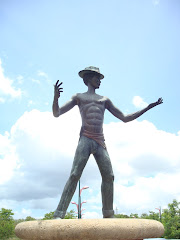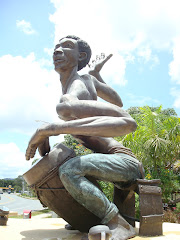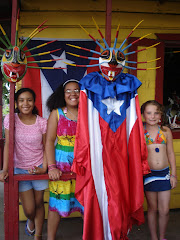
High on a hill lives an extraordinary artist that allows his spirit to influence his work. He identifies his work as revelations that come to him through dreams and meditation; serving as the medium to the creation lead on by a higher power. Inspired at a young age to develop this calling he found Arthur Schaumburg to be a strong influence and gives him credence whenever possible. He feels that in all of his lives he has had a strong connection to expressions of art and feels a responsibility to bring it to the public as each piece evolves into a new perspective of his current consciousness. Self-taught in sculpture, his workshop is his power his person.
David’s African-Caribbean connection is reflected by rediscovering the past and he brings it to the present so that it’s never denied the existence it rightly deserves. He is motivated to get the spirit of his trilogy of roots in three dimensions since they all have a story to tell. One such piece that was most memorable to him was “Dona Maria” created while his brother was hospitalized at a time when AIDS was not yet identified. “Dona Maria” reflects the free love mothers give, unconditional acceptance.
David feels that the pieces, which will be the most difficult for him to create, are the ones not yet done. Apparent in his current pieces are the generously proportioned hands and feet that he feels represent the ability Puerto Ricans have in achieving whatever their dreams may be and to stand tall in that belief. He generously allowed me to view his newest piece which has yet to be unveiled and is titled “El Cacique Naguabo” here he captured the essence of water which represents the spiritual needs the earth as well as the inhabitants need to survive and flourish to our greatest capacity.
One perspective David felt strongly about was to leave a legacy behind, to be a link to the old then to the present. He wants to be good to his gift so it will live on long after he is gone; to have people see his work and say “Damn”
The works of David Aponte Resto can be found in Puerto Rico, New York, and Texas. For further insight check out a few websites that feature David’s life and work: http://www.puertoricanpower.net/
my.opera.comhttp://www.artistasdelatierra.com/artistas/DavidAponthttp://www.voodoochilli.net/showArtist.php?artistID=5263
You can contact David at: davidelindio@yahoo.com or
drop him a line at PMB 054 Box 760 Rio Blanco, Puerto Rico 00744
David Aponte Resto is currently a resident of Naguabo living in the district of Rio Blanco. Naguabo is known as "El Pueblo de los Enchumbaos" (the town of the soaked ones). Naguabo was founded in July 15, 1821. Derives its name from a local Indian Chief Naguabo.







